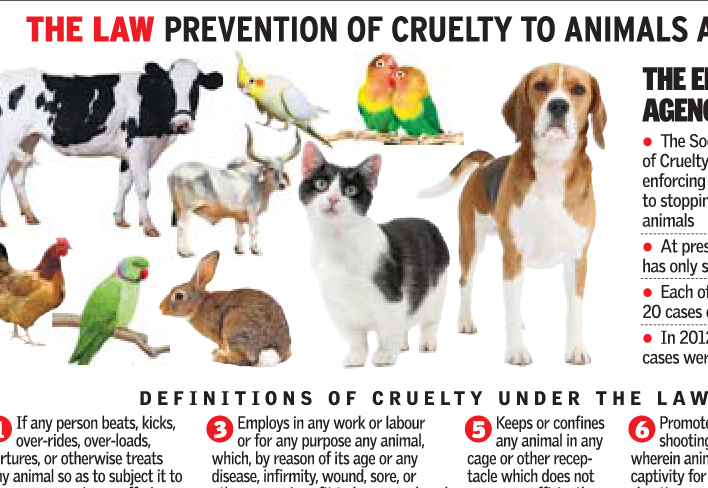Animal cruelty is a pressing issue that elicits strong emotions from animal lovers and rights activists alike. However, it also raises crucial questions about legality and enforcement. In the United States, the legal landscape surrounding animal cruelty is often convoluted, varying significantly from state to state. This article aims to dissect the complexities of animal cruelty laws in the U.S., offering a comprehensive overview that every citizen should grasp to foster a more humane society.
Understanding Animal Cruelty
Animal cruelty, fundamentally, refers to the infliction of harm or suffering upon animals. This can manifest in myriad forms, ranging from neglect and abandonment to physical abuse and exploitation. While many people might instinctively view animal cruelty through the lens of heinous acts of violence, the term encompasses a broad spectrum of behaviors that can be equally detrimental. For example, failure to provide adequate food, water, shelter, and veterinary care are all classified as forms of neglect.
Types of Animal Cruelty
Animal cruelty can be categorized into two primary types: active and passive cruelty. Active cruelty involves direct actions that result in harm, such as beating, poisoning, or killing an animal. On the other hand, passive cruelty arises from neglect or inadequate care, leading to suffering due to the omission of necessary actions, as seen in cases of hoarding or failing to provide necessary medical treatment.
State Laws and Variability
One of the most disconcerting aspects of animal cruelty is its legal status, which varies by state. While the federal Animal Welfare Act (AWA) establishes a baseline for the humane treatment of animals in certain contexts, it predominantly applies to animals used in research, exhibition, transport, and those bred for commercial sale. This leaves a significant gap for pet owners and animals that do not fall under these categories.
States have their own statutes addressing animal cruelty, resulting in a patchwork of laws. In some states, the penalties for animal cruelty may range from fines and community service to felony charges and imprisonment. For instance, states like California and Illinois have enacted comprehensive laws that impose strict punishments for acts of cruelty, while other regions may have limited legal recourse or even lack enforceable statutes aimed at protecting animals. This variances in laws can create confusing scenarios for citizens regarding what constitutes acceptable treatment of animals.
Federal and State Enforcement
The enforcement of animal cruelty laws also presents its challenges. While law enforcement agencies may have protocols for responding to reports of animal abuse, they often prioritize cases based on severity and available resources. In some instances, animals may be rescued from abusive circumstances, yet the perpetrators escape legal repercussions due to jurisdictional ambiguities or lack of evidence.
Moreover, societal attitudes towards animals greatly influence the enforcement of these laws. In communities where animals are predominantly viewed as property rather than sentient beings deserving of care, instances of cruelty may be overlooked or underreported. Conversely, communities with a strong emphasis on animal rights may see more proactive measures taken against cruelty, resulting in higher rates of reporting and enforcement.
Recognizing Animal Cruelty
Understanding the signs of animal cruelty is vital for citizens who wish to take action against it. Symptoms of an abused animal may include signs of neglect, such as malnourishment, lack of medical care, or poor living conditions. On an emotional level, animals exhibiting fear or aggression towards humans or other animals may also indicate a history of abuse.
Moreover, it is essential to recognize that animal cruelty may occur in situations that are not immediately visible. For instance, puppy mills operate in the dark corners of legality, producing animals in horrific conditions that often fall outside the purview of local laws. It is vital for citizens to remain vigilant and report suspicious activity to local authorities, as these reports can lead to crucial interventions.
How Citizens Can Make a Difference
Citizens have the power to enact change regarding animal welfare through several channels. Advocacy begins with education. By informing oneself and others about the realities of animal cruelty, individuals can foster a culture of compassion and understanding. Participating in community outreach programs and collaborating with local organizations dedicated to animal rights can also amplify advocacy efforts.
Moreover, legislative engagement plays a pivotal role. Citizens can support and advocate for stronger animal welfare laws, helping to bridge the gaps present within existing legislation. By contacting elected officials, signing petitions, and participating in community forums, individuals can help elevate animal welfare issues to the forefront of local and national concerns.
In conclusion, while the legal framework surrounding animal cruelty in the United States can seem perplexing, understanding its intricacies is vital for anyone concerned about animal welfare. By familiarizing ourselves with the types of cruelty, recognizing the enforcement challenges, identifying signs of abuse, and engaging in advocacy, we can collectively take vital steps toward creating a more humane society. Every citizen has the responsibility to educate themselves, advocate for stronger protections, and act when witnessing acts of cruelty. Together, these actions can contribute to a significant shift in how our society views and treats its animal inhabitants.









